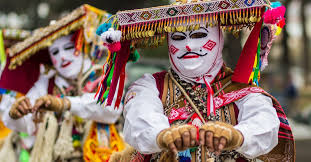The Feast of Corpus Christi (“Fronleichnam” in German) is a Catholic festival celebrated on the second Thursday after Whitsun. Corpus Christi means the Body of Christ and refers to the elements of the Eucharist also called the Holy Communion, Last Supper or Lord’s Supper. In the Church of England, this day is called ‘Day of Thanksgiving for the Institution of Holy Communion’.
The emergence of Corpus Christi as a Christian feast didn’t happen until the second half of the thirteenth century with the efforts of a nun called Juliana of Liège. Since childhood, Juliana had been claiming that God had been telling her that there should be a feast day for the Eucharist and eventually she petitioned the Bishop of Liège. In those days bishops could order feasts in their local dioceses.
The bishop agreed to the feast and convened a synod in 1246 and ordered that a celebration of Corpus Christi should be held annually. The Corpus Christi celebration only started to become more widespread after both Juliana and the Bishop had died. In 1264 Pope Urban IV issued the papal bull Transiturus in which Corpus Christi was made a feast throughout the entire Latin Rite.
He fixed it for Thursday after the “octave” of Pentecost when only designated celebrations or special feasts were blessed. This feast is celebrated on a Thursday in remembrance of the institution of the Eucharist (the last supper) which takes place on Maundy Thursday, the eve of Jesus’ death on the Cross.
In Mexico, as in other Latin American countries, the celebration of Corpus Christi is carried out with various processions. It is customary for children to be dressed as “inditos” on this day. The costume consists of wearing a blanket camisole and a moustache painted with burnt cork. The girls wear a skirt, also called a chincuete, and both decorate their clothes with guarachas and baskets full of fruit or sweets.
